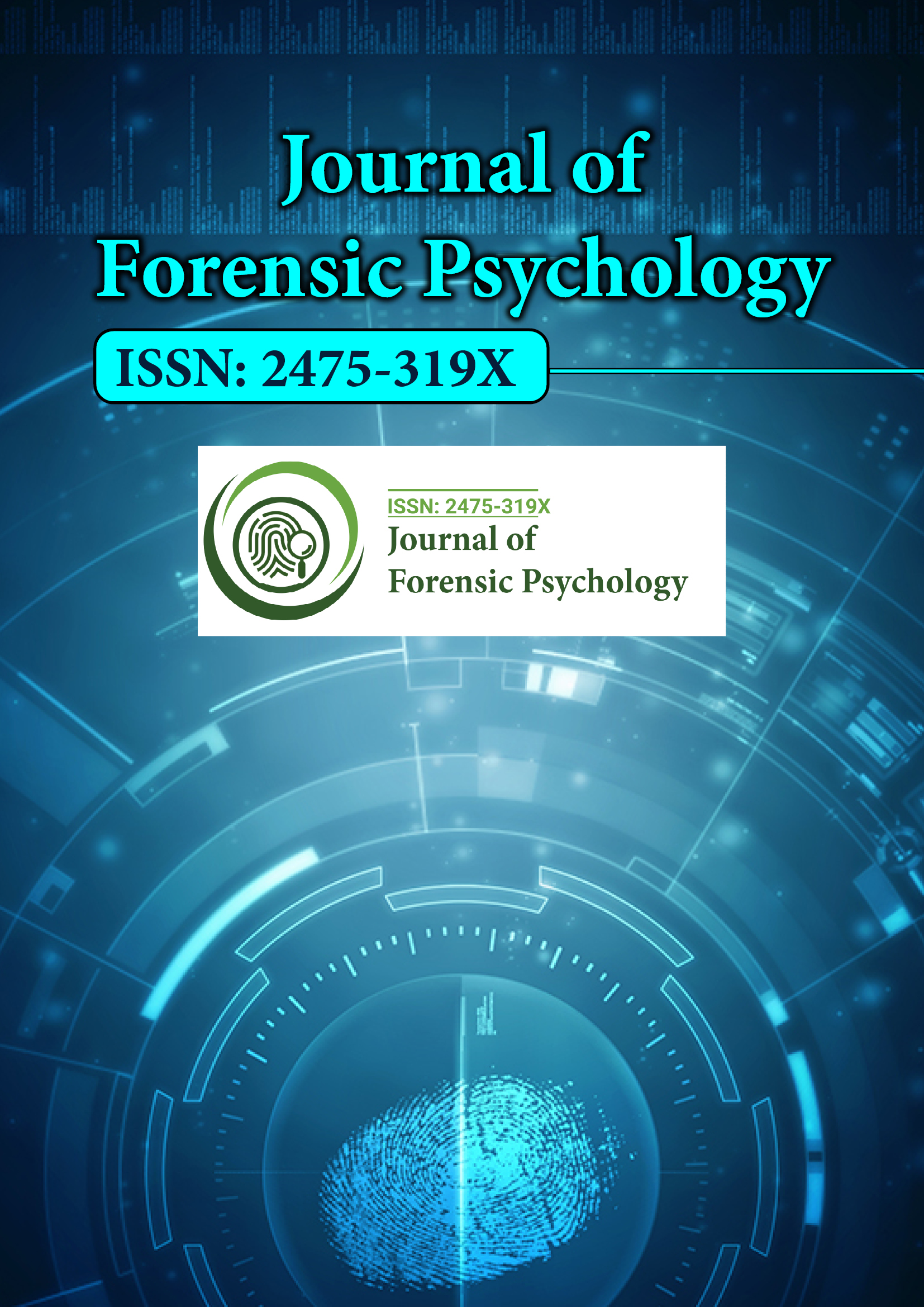Indexed In
- RefSeek
- Hamdard University
- EBSCO A-Z
- Publons
- Geneva Foundation for Medical Education and Research
- Euro Pub
- Google Scholar
Useful Links
Share This Page
Journal Flyer

Open Access Journals
- Agri and Aquaculture
- Biochemistry
- Bioinformatics & Systems Biology
- Business & Management
- Chemistry
- Clinical Sciences
- Engineering
- Food & Nutrition
- General Science
- Genetics & Molecular Biology
- Immunology & Microbiology
- Medical Sciences
- Neuroscience & Psychology
- Nursing & Health Care
- Pharmaceutical Sciences
Opinion Article - (2023) Volume 8, Issue 1
Reduction of Cybercrime by Practicing Environmental Criminology
Piquero Latvala*Received: 01-Feb-2023, Manuscript No. JFPY-23-20034; Editor assigned: 03-Feb-2023, Pre QC No. JFPY-23-20034 (PQ); Reviewed: 17-Feb-2023, QC No. JFPY-23-20034; Revised: 24-Feb-2023, Manuscript No. JFPY-23-20034 (R); Published: 03-Mar-2023, DOI: 10.35248/2475-319X.22.8.271
Description
For many years, environmental criminology principles have helped to comprehend the contextual elements of criminal acts and suggest measures to prevent them. There are three main hypotheses in environmental criminology: The geometry of crime, which assumes that the distribution of crime events is not random but occurs in locations where the activity spaces of offenders and targets intersect, and the routine activity approach, whose most popular evidence is that crime occurs at the micro level in the absence of capable guardians when a motivated perpetrator and a suitable victim meet in space and time. These mid-range theoretical bodies have an advantage over broad theories in that they are easier to prepare and have given rise to logical frameworks like the crime triangle and the repetitive victimisation premises that help us comprehend crime better. Although the geography of crime has always had a significant impact on how these frameworks are applied, their potential relevance to crimes committed online has not yet been fully explored. Since there was minimal understanding of cybercrime in the pre-digital era when environmental criminology theories were being examined, their development was mostly geographical. Some academics who previously concentrated on crime in physical locations are now paying closer attention to crime in cyberspace as a result of the growth of cybercrime as an issue. The theoretical development of environmental criminology theories into cybercrime has benefited from this shift in emphasis. While some believe that the contraction of time and space in cyberspace complicates the application of environmental theories in this setting, others believe that they only need to be adjusted to the specifics of the environment. Since then, several observed research on the use of environmental theories to comprehend the dynamics of various types of cybercrime have been carried out. As Newman and Clarke shifted the focus of their investigation to ecommerce crimes, the balanced choice viewpoint was also applied to cybercrime. Then, situational crime deterrent tactics have been used in a variety of circumstances, including those described by markets for stolen data or financial cybercrimes, among many others. In general, academics have given the routine activity strategy and the rational choice perspective attention over the past 10 years, which has advanced and advanced the discipline. Yet, there haven't been many findings that use this idea to avoid cybercrime when it comes to the geometry of crime. This may be because the theory heavily relies on the idea of place, which is typically connected to a physical space. It has been argued, however, that cyberspace can be viewed as a digital intersection where criminals can also engage with a setting that describes criminal opportunities. This argument shows that not all environmental criminology notions are geographical; some are only spatial, like hot spots. Yet, such concentrations can also be seen in crimes taking place in cyberspace. Crime hot spots, which are the result of the frequent occurrence of criminal events in a specific location over a specific period of time, have typically been monitored in physical space. For instance, there can be particular web domains that are more likely than others to be targets of defacement, and there might be particular times of day when defacer activity is more active. In this situation, cyberspace locations or areas that are routinely vandalized would develop into spatiotemporal hot spots of cybercrime. The hypothesis of repeat victimization's applicability in the digital environment is still unknown.
Citation: Latvala P (2023) Reduction of Cybercrime by Practicing Environmental Criminology. J Foren Psy. 8:271
Copyright: © 2023 Latvala P. This is an open-access article distributed under the terms of the Creative Commons Attribution License, which permits unrestricted use, distribution, and reproduction in any medium, provided the original author and source are credited.

